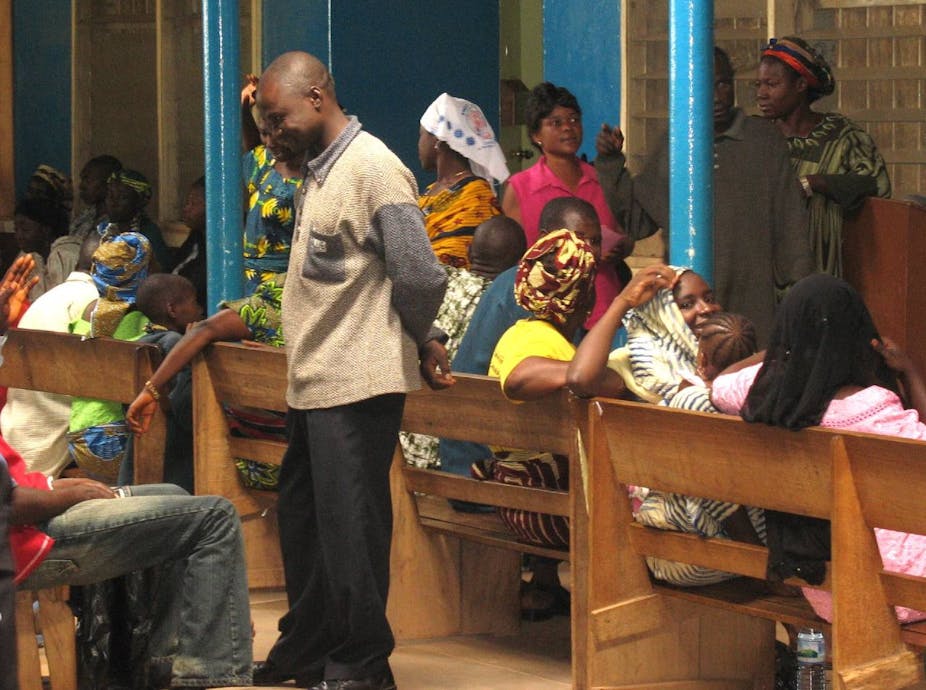As a virologist working in the Gambia, the idea of a portable microscope that uses fluorescent imaging and can be attached to your smartphone to detect viruses and bacteria in the field sounds amazing.
But this is not from a Hollywood blockbuster with another improbable device but from researchers at UCLA who have developed a device that can detect a single virus and material less than a thousandth the width of a human hair. It weighs less than half a pound.
The device uses 3D technology and has a laser diode to illuminate samples.
It’s the first time that single nanoparticles and viruses have been detected “using a cellphone-based, field-portable imaging system,” said inventor Aydogan Ozcan, Professor of Electrical Engineering and Bioengineering at UCLA. He added that it “could enable the practice of nanotechnology and biomedical testing in field settings and even in remote and resource-limited environments”.

It could be very useful in Africa as the majority of health workers and officials are trained without access to hi-tech laboratory equipment and such imaging systems. A small, portable - and affordable device - could spur better understanding and interest in the mechanisms of bacteria and viruses and their infections if it were available in resource poor settings.
As I read through their research I became increasingly intrigued by recent developments in nanotechnology and imaging. And like any researcher, the ways of using this technology in my field of research: Human Immunodeficiency Virus (HIV) and Hepatitis B (HBV).
HIV has a diameter of 120nm (nanometres) and HBV is even smaller and half the size, with a diameter of 60nm. The UCLA team used the device to detect particles of human cytomegalovirus (HCMV), which measure about 150–300nm. To give an idea of scale, a human hair measures about 100,000nm across.
To detect a virus, we normally use a PCR machine, which amplifies and quantifies the amount of virus in a given sample. Although PCR machines are found in most African laboratories now, they are very expensive.
A number of immediate questions came to mind when thinking about the new device and first and foremost was: what will this mean in terms of diagnosis?
Out in the field
For any diagnosis, the sensitivity and specificity of the test is paramount. Measuring viral load gives us an idea of how infected someone is. And the ability to detect a single virus without a PCR machine could be a eureka moment for viral load laboratory investigation.
Current methods of viral load quantification are sensitive but require some key things: well-established laboratories, expensive consumables, an expensive PCR machine and a laborious sample collection, transpiration and processing. In addition to all of this are well-trained laboratory operators to obtain reliable and reproducible data. The turn around time for such assays are two to three days in places where resources are poor, and where samples are batched to reduce the cost of tests.
If testing can be brought out of the lab and into the field or clinician’s room this would ultimately allow better management of patients and dramatically reduce the processing time of viral load testing.
Harsher and more remote conditions
The UCLA paper details what sample preparation would be needed prior to analysing with the smart phone imagining system. But the reagents and consumables it needs - nitrogen blow, monoclonal antibodies, fluorescence - are not easily acquired in many reference laboratories in resource-poor settings.
Even if clinicians and researchers were able to procure these, the sample processing step is complicated (plasma collection, drying of sample on slides using chemicals) and may prove difficult to perform outside the laboratory and in the field where conditions are harsher, locations are remote, and resources such as electricity and clean water are limited.
An ideal sample type for field-testing (outside the laboratory) in resource-poor settings are blood from a finger prick or saliva swaps.
Cost
It isn’t clear what the device itself costs but it would also be interesting to determine the cost per test using this technology, as this would also be an important factor. Commercial kits used to determine viral load can cost more than US$50 (£30) a test, but this is without the cost of labs or human resources.
The next step would be to validate the new technology by comparing it to a traditional diagnostic laboratory test. There are still a number of questions about practical use. It will be interesting to see how the technology will hold up in the field conditions in Africa. Will the device consume the smart phone battery at a fast rate, and if so will recharging systems be then required in the field? Can the sample preparation be done without contamination? How many samples can one process per day? Does one need training to read the results?
The technology certainly has potential but needs further fine tuning for use in the field in resource poor settings. But I am excited. And would be keen to use it to begin testing the water supplies in my neighbourhood.

